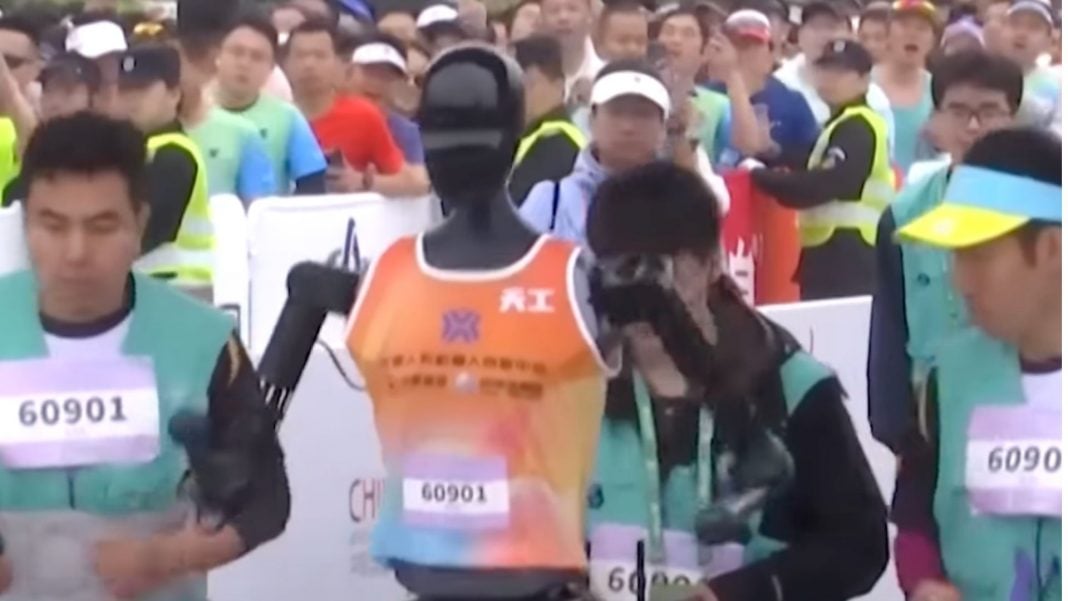The Yizhuang half-marathon in Beijing was a blend of technology and athletics as 21 humanoid robots joined thousands of human runners on the 21km course.
These robots, created by Chinese companies like DroidVP and Noetix Robotics, have sizes from just under 1.2m to 1.8m tall. One of the companies presented a robot that looked like a human, complete with feminine features, and had the ability to wink and smile. There were also robots dressed for the race, with a few wearing running shoes to further enhance their performance.
Moreover, one robot stood out with boxing gloves, and another sported a red headband emblazoned with the words “Bound to Win” in Chinese.
Some of the robots underwent weeks of testing to prepare for the race. These robots were not only accompanied by human trainers but also required physical support from them during the event. Spectator He Sishu, who works in artificial intelligence, shared, “The robots are running very well, very stable … I feel I’m witnessing the evolution of robots and AI.”
The winning robot, Tiangong Ultra, from the Beijing Innovation Centre of Human Robotics, completed the race in 2 hours and 40 minutes. On the other hand, the men’s race winner finished in 1 hour and 2 minutes.
Tang Jian, the chief technology officer of the robotics centre, explained that Tiangong Ultra’s performance was helped by its long legs and an algorithm that mimics how humans run a marathon. “I don’t want to boast, but no other robotics firms in the West have matched Tiangong’s sporting achievements,” he said. He also added that the robot’s batteries were replaced three times during the race.
This is the first time humanoid robots have raced alongside humans, even though they have appeared in marathons over the past years.
China is investing heavily in emerging industries like robotics, hoping they will fuel new economic growth.
BBC News shared the story in a social media post, and netizens had mixed reactions.
View this post on Instagram
As one commenter put it, “They’d have a lot more success if we didn’t keep this ridiculous notion that robots have to look like people. Give it four legs…and suddenly it’s more stable and has more weight capacity for computers and batteries.”
Another netizen remarked: “It’s good to see a diversity of robot forms, sizes, and capabilities as it shows multiple streams of R&D. While some are primitive today, they are at the disruptive innovation stage; based on the progress shown here, they will clearly cross the chasm into being ready for many everyday use cases within three to five years; it’s going to be interesting times as we adapt to the new economics of non-human but humanoid workers.”
While some found it impressive, other commenters shared a more serious take.”In a few years, this ain’t funny anymore,” one person wrote

